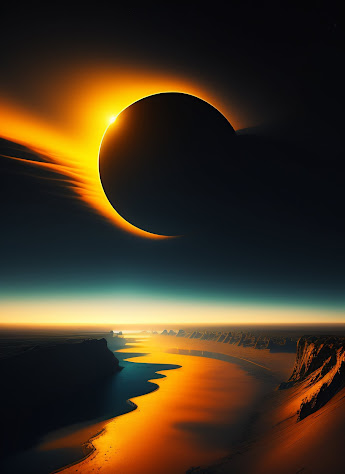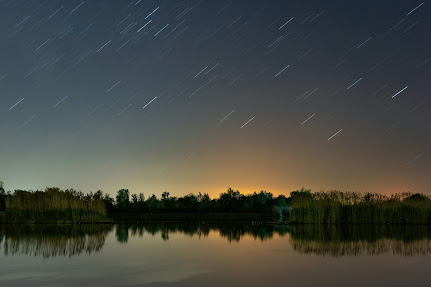Introduction
Unusual cosmic occurrences and celestial phenomena take front stage on the universe's intriguing stage. These celestial events, which range from planetary alignments to meteor showers, leave us in wonder and increase our comprehension of the universe. We set out on a trip to explore the wonder and scientific importance of these cosmic happenings in this blog. Join us as we explore the marvels of celestial occurrences and space events, from their stunning visuals to their deep effects on how we see the cosmos.
Solar Eclipses
When the Moon moves in front of the Earth and the Sun, it creates a solar eclipse, which casts the Moon's shadow over a piece of the planet's surface. The Sun's whole disc is covered by the Moon during a complete solar eclipse, which also reveals the Sun's outer atmosphere, the corona. As the sky darkens, stars become visible, and the brilliant corona shimmers around the Moon's outline, this amazing alignment produces a fantastic experience. The entire eclipse is visible only to those who are inside the confined path of totality, and it is a stunning phenomenon that leaves a lasting impact.
Lunar Eclipses
When the Earth passes in front of the Sun and the Moon, it creates a lunar eclipse, which casts a shadow on the moon's surface. A lunar eclipse may be seen from anyplace on the night side of the Earth when the Moon is above the horizon, unlike a solar eclipse.
The Moon progressively becomes darker as it moves into the Earth's shadow during a lunar eclipse. A "blood moon" is a phenomena when the Moon appears reddish or coppery due to the shadow. The dispersion of sunlight by the atmosphere of the Earth results in this mesmerising colour.
Lunar eclipses may be seen without a telescope and don't need any specialised gear to be seen. They may last a few hours and happen many times a year. Lunar eclipses have fascinated societies throughout history, and there are several myths and folktales related to them. From a scientific standpoint, lunar eclipses provide astronomers the chance to investigate the Earth-Moon-Sun system and acquire important information about our planetary neighbourhood. An amazing opportunity to see the glories of the night sky and understand the complex mechanics of our solar system is seeing a lunar eclipse.
Meteor Showers
When the Earth passes through a stream of debris left behind by a comet or asteroid, it is known as a meteor shower. The meteors or shooting stars that are produced when these meteoroids hit the Earth's atmosphere and burn up are known as meteors.
Meteor showers are named after the radiant, a constellation from where they seem to come. Predictable meteor shower dates occur from the Earth encountering certain meteoroid streams at precise times each year as it travels along its orbit. The Perseids in August and the Geminids in December are two well-known meteor showers.
It is advisable to select a spot away from glaring city lights and to lay down or recline in a comfortable posture to see a meteor shower. As meteor showers may have varied amounts of activity, patience is essential. During a meteor shower's height, one may see many meteors per hour on a clear, moonless night.
For millennia, meteor showers have captivated people's attention and aroused curiosity. They serve as a continual reminder of our surroundings and the immensity of the cosmos. Watching a meteor shower may be a spectacular experience that links us to the beauty and mystique of the universe, whether you are a casual stargazer or an avid astronomer.
Comets and their Applications
Comets are asteroids that circle the Sun and are made up of ice, dust, rock, and organic molecules. They have proven crucial in helping us learn more about the solar system. Comets provide astronomers a glimpse into the past by carrying old material from the early phases of the solar system's development. Researchers may learn more about the elements that make up planets and the chemical processes that took place when our solar system formed by examining the make-up of comets. We have been able to examine comets up close and get important information about their physical and chemical features thanks to space missions devoted to cometary investigation, including the Rosetta project. These missions advance our understanding of comets and their place in the larger scheme of the universe.
Aurora Borealis and Aurora Australis
The polar regions of the Earth are home to the mesmerising natural light displays known as the Aurora Borealis, or Northern Lights, and the Aurora Australis, or Southern Lights. They are the consequence of interactions between charged particles from the Sun and the Earth's magnetic field.
Some of the charged particles that are released by the Sun during solar flares and coronal mass ejections make it to the Earth's magnetosphere. These charged particles are directed towards the poles by the magnetosphere. Beautiful auroral displays are produced as a result of particle interactions with gases in the Earth's upper atmosphere, which radiate light of different colours.





